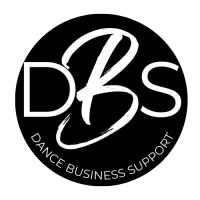TIPS FOR SUCCESSFUL DANCE STUDIO MANAGEMENT
Running a successful dance studio requires more than just a passion for dance; it demands effective management skills. Whether you’re a seasoned dance professional or a budding entrepreneur, understanding the intricacies of dance studio management is crucial for sustained success. This comprehensive guide will delve into key aspects of running a dance studio, offering insights, tips, and strategies to help you navigate the challenges and create a thriving dance community.
Business Planning: The Foundation of Success
Before opening your dance studio, it’s essential to develop a comprehensive business plan. This should include your studio’s mission and vision, target audience, competitive analysis, and financial projections. A well-thought-out plan serves as a roadmap, guiding your decisions and actions as you build and grow your dance studio.
Legalities and Permits: Ensuring Compliance
Understanding the legal requirements for operating a dance studio in your location is crucial. This includes obtaining the necessary permits, adhering to zoning regulations, and ensuring compliance with health and safety standards. Establishing a legal foundation from the start helps prevent issues down the road.
Choosing the Right Location: Location Matters
Selecting an ideal location for your dance studio is a critical decision. Consider factors such as accessibility, visibility, and the demographics of the area. A convenient and appealing location can attract more students and contribute to the overall success of your dance studio.
Facility Setup and Design: Creating the Right Atmosphere
The physical environment of your dance studio plays a significant role in the overall experience for students. Pay attention to the layout, flooring, mirrors, and overall aesthetics. A well-designed space enhances the learning experience and contributes to a positive and motivating atmosphere.
Class Scheduling and Curriculum Development: Balancing Variety and Consistency
Developing a well-rounded class schedule that caters to different age groups and skill levels is essential. Additionally, crafting a comprehensive curriculum ensures that students receive a balanced dance education. Striking the right balance between variety and consistency keeps students engaged and fosters skill development.
Marketing and Branding: Building Your Dance Community
Effective marketing is key to attracting and retaining students. Develop a strong brand identity, create an online presence, and utilize social media platforms to reach your target audience. Implementing promotional events, referral programs, and partnerships with local businesses can also contribute to building a vibrant dance community.
Staff Management: Nurturing a Talented Team
Hiring qualified and passionate dance instructors is crucial to the success of your studio. Foster a positive working environment, provide ongoing training, and recognize the contributions of your staff. A motivated and skilled team enhances the overall quality of instruction and contributes to student satisfaction.
Financial Management: Budgeting and Revenue Streams
Effectively managing your studio’s finances involves budgeting, tracking expenses, and diversifying revenue streams. Consider offering different class packages, hosting events, and exploring partnerships to increase income. Regularly review your financial performance to make informed decisions for sustainable growth.
Student Engagement and Retention: Fostering a Sense of Community
Building a sense of community within your dance studio is essential for student retention. Organize events, recitals, and workshops to foster connections among students. Encourage feedback, and continuously assess and adapt your programs to meet the evolving needs and preferences of your dance community.
Technology and Software: Streamlining Operations
Embrace technology to streamline administrative tasks such as class scheduling, registration, and billing. Utilize dance studio management software to efficiently manage student records, track attendance, and handle payments. Leveraging technology allows you to focus more on the creative and community-building aspects of your dance studio.
Conclusion
Embrace technology to streamline administrative tasks such as class scheduling, registration, and billing. Utilize dance studio management software to Successfully managing a dance studio requires a combination of business acumen, creative vision, and a genuine passion for dance. By carefully addressing the key aspects outlined in this comprehensive guide, you can create a thriving dance studio that not only provides quality dance education but also fosters a sense of community and artistic expression. Stay adaptable, continuously seek improvement, and watch your dance studio flourish in the dynamic world of performing arts.







